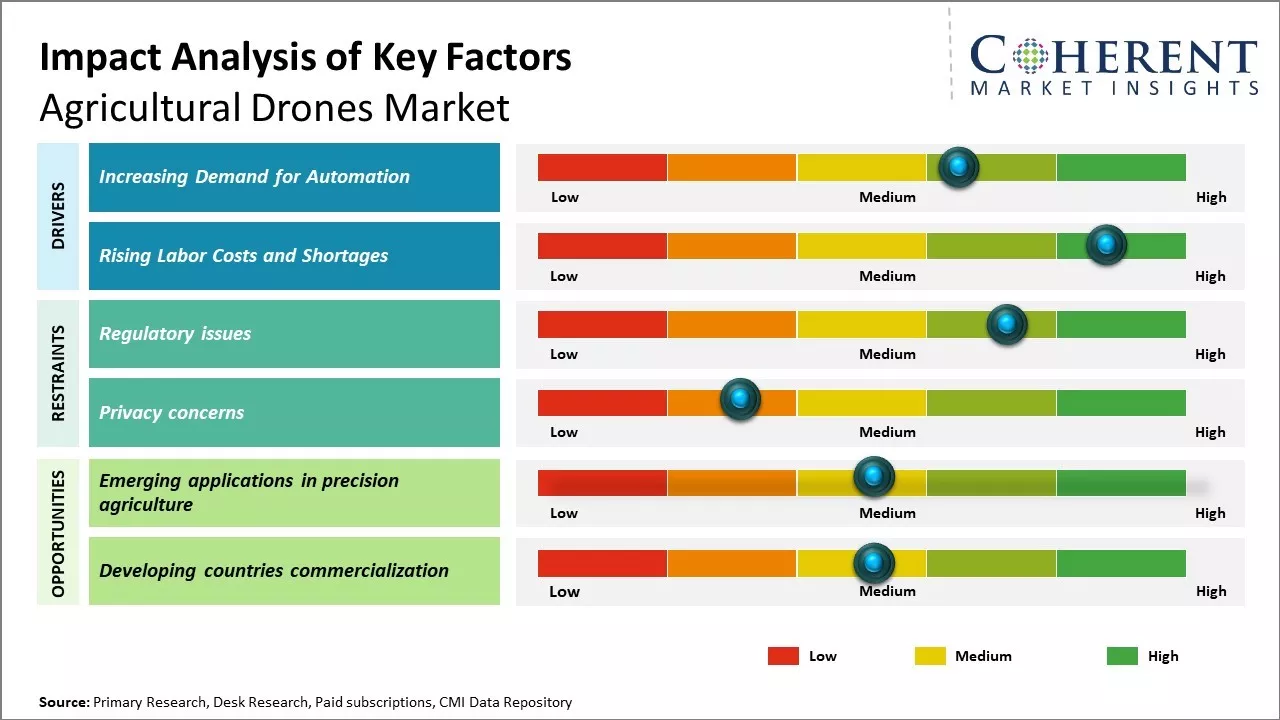Global agricultural drones market is estimated to be valued at US$ 5.86 Bn in 2025 and is expected to reach US$ 23.73 Bn by 2032, exhibiting a compound annual growth rate (CAGR) of 22.1% from 2025 to 2032.

To learn more about this report, Request sample copy
Global agricultural drones market is witnessing growth due to increasing adoption of advanced technology and cost-effective agricultural drones among farmers. Technology empower farmers to gather field data, monitor crop growth, detect problems, map fields, and optimize irrigation and outputs. Drones enable early detection of diseases and pests, scans large areas of land quickly, monitor crops from the air on a regular basis, and provide much more precise field analysis than traditional methods. This helps farmers to boost productivity and maximize profits using minimal resources and preventive actions. With depleting groundwater supplies and increasing pressures of climate change, agricultural drones are supplementing conventional farming techniques for enhanced crop monitoring and management.
Market Driver: Rising demand for crop monitoring and analysis
Agricultural drones are increasingly being used by farmers to monitor crop growth, analyze fields for problems, and ensure optimal yields. With land holdings becoming larger in size, it is not feasible for farmers to manually inspect vast areas of land. Drones equipped with cameras and sensors enable them to survey fields from above and gather a richer perspective compared to conventional methods. High-resolution images and infrared photography captured by drones allow identification of moisture levels, signs of disease and nutrient deficiencies in crops at an early stage. Any issues that are detected can then be addressed promptly before significant damage occurs. Drones also facilitate analysis of sowing and fertilizing patterns to determine if changes are required for better results. With agricultural production needs to rise sharply to feed the growing population, maximizing output from available land resources is crucial. Drones streamline crop monitoring activities and help boost productivity through timely interventions based on a birds-eye assessment of farm fields. Precision farming supported by drones plays a key role in sustainably meeting escalating global food demand. Drone technology also aids in evaluating field conditions post-harvesting. Drones can fly over fields to check for leftover plant stalks and find spots that might need new planting or special care to get ready for the next crop season. Crop residue mapping assists farmers in making informed nutrient and soil management decisions. The use of drones for inspecting vast tracts of agricultural land in a short time has significant potential to increase yields, optimize resource use and lower production costs for farmers. When paired with analytical software, drones transform crop monitoring into an insightful and data-driven process. Their crop analysis capabilities address a pressing need amongst farmers and help improve farm management techniques for higher productivity. As agriculture becomes increasingly technology-reliant, drones can emerge as valuable tools that offer eco-friendly and low-cost solutions for vital crop inspection and surveillance activities.
Joining thousands of companies around the world committed to making the Excellent Business Solutions.
View All Our Clients